GENES #6 - Donnel Garcia
An Interview with local photographer Donnel Garcia about two of his favorite things and the stories behind them.
This is the 6th installment in my series called GENEs where I interview locals I have met over my time taking photos in “east vancouver” and unravel the stories behind their favorite things.
To check out the previous interviews covering a range of clothing with gorgeous stories, see the link here.
My Introduction to Donnel
When I embark on a new project, the pure scientist inside of me has a habit of trying to consume as much information as I possibly can. In fact, the “research” phase is always one of my favorite parts of starting something new. I find the process of digging into something by curating and consolidating information very engaging and it sets my mind on fire.
I usually start by collecting resources, images, writings, opinions, finding experts or “elders" in the space or looking at up-and-comers, for me it’s just about collecting as much data as possible, but jumping into the endeavor while collecting.
If you’re familiar with Rick Rubin’s new book The Creative Act, he would describe this phase as “collecting seeds”; a time in which you are consuming everything you can, trying to find information and planting seeds to see if something will grow out of this research. “We’re searching for potential starting points that, with love and care, can grow into something beautiful. At this stage, we are not comparing them to find the best seed. We simply gather them.” (Rubin, 2023).
For better or for worse, this tends to apply to everything in my life, and it kind of drives my wife nuts as I often become “obsessed” with whatever new “hobby” I am taking on, whether it be running, biking, environmental issues, investing, tennis, painting/drawing, nutrition, writing, skateboarding, parenting, or in the case of this introduction, and the theme of a lot of this writing, photography. I guess I plant a lot of seeds…
As I was in the first stages of starting SOEV I was in a constant search for photographers to learn from and started to think about how I could refine my own craft. With a medium like photography, I needed to collect and study images, buy books, and look for people that I could find inspiration in, and most importantly, train my eye. I would spend time scrolling through local businesses and people in the neighborhood to see who was doing interesting things behind the lens.
I came across a lot of great, local photographers, and one of them was Donnel.
When I first started following his work, he was doing product and editorial photography for Livestock Vancouver, and his style and approach could be seen in the majority of things they were doing. From early on, I’ve always appreciated the wide range in the types of photos he shoots, often pushing what a “product shot” could be, experimenting with different mediums, lenses, and colour palettes, all while still maintaining the “Donnel feel”. Through his work can see his artistic vision evolve and change as he flows through a range of projects. If you are unfamiliar with his work, his Selected Works can be seen on his website here.
After following Donnel for a while on social media, I finally met him in the neighborhood a couple years ago. Of course I took a few photos that day and since then, I have been lucky to have the opportunity to pick his brain on occasion about the industry, culture, gear, books, and many other topics.
He now works out of A Living Taste, where he is shooting editorial, product, and creative shoots with their label Alterior, as well as with the brands they bring into the shop. He also uses this space for his freelance work and free library, in addition to being a community hub and a place for thinking and working on all the other projects he is working on simultaneously.
Donnel is a multi-disciplined artist, his work spans beyond his photography and into writing, book curating, community building, activism, fashion, design, and beyond. It is clear what a massive influence he has on his communities, as any time we are together, there will always be one or two people stopping him to say hello.
Safe to say I was so excited when he said he would be down to talk about some of his favorite things!
Setting Up at the Studio
I got to the shop earlier than we intended to meet, partially to catch up with the fellows in the shop, but also to “warm-up” my camera (and eye) and look around “Book Section" before we got to talking.
I find myself stopping by regularly just to flip through one or two magazines and see what books are on display, again, continuing the data collection re: my photography. My mind could stay sitting in there all day, flipping through Japanese fashion magazines or reading some obscure design principles book, but my body is usually feeling the call of the streets and for me to keep walking and take more street photos, so my sessions are usually pretty quick.
On the shelves, on any day, are books about design principles, philosophy, photography, sports, music, art, or life. On the table are usually things he is currently reading or into and on this day a few things caught my eye; a stack of Popeye magazine (one I always have to pick up), Sammy Sonju’s photo book Seven Lives of Tokyo, Let the River Flow, and a stack of Life of Things magazine.
After taking a few photos, I went out for a quick breath of fresh air and when I got back, Donnel was at the desk waiting for me.
The Red Jacket
We started where we usually start when I visit the shop/workspace; lots of questions, this time though, I was ready with a notebook, my camera, and prepared to record our conversation. We sat down at the Book Section table, joined by Ryu who was diligently scanning some film using Donnel’s set-up, we started chatting. With the hum of the film scanner adding some vintage ambience with some expertly curated music by the brothers playing in the sound system, I started asking some questions…
Today, I was curious about his organizational method of Book Section, and we quickly got talking about the Life of Things magazine, flipping through an issue together and talking about some photography principles, the writing and structure of the Life of Things magazine.
I sat back down and started to record our conversation, Donnel immediately pulled out the red jacket from the bag he brought, and an instant smile was on his face.
He started with the origin story of how it came into his possession. His great grandfather passed it down to his grandfather, and then:
“My grandfather passed away when I was around 14, and I was living with him at the time. [After he passed] I was cleaning up all of his stuff…he pretty much just wore suits every day, as a 13/14 year old, not gonna lie, I wasn’t interested in the suits or whatever. But I remembered… there was one thing that I was like, oh, this is actually a cool jacket. This is the only thing that I own that is from my grandfather. I have tons of stuff from my grandmother, but my grandfather, he died when I was young, so I don't really have that much stuff from him. And he didn't really own too many things either.”
He held it up to show me the front and we both admired the shiny red fabric. He then started to gently fold the jacket and proceeded to make a neat rectangle from the soft jacket in front of him, he put his hands across the chest and I asked him about the origins of the logo and how it came into his great-grandfathers possession.
“… the dope thing about it is that my great grandfather just wrote his initials and our family last name. And then patch is from the city where I was born, basically, where I'm from. This stuff [in the Philippines] is super common. It's funny because maybe if you go to a thrift store in Vancouver, you find a jacket like this and you're like, oh, this is so cool, but literally, you can get this made in an hour in the Philippines. They all made jackets and branded stuff like that that just rep their town, which I thought was pretty cool. If you work at your local city hall or whatever, everybody has merch. It's like, just a thing to make merch of your own city. So that's what I believe [it came from].”
The entire time we talked, he was sitting comfortably, sometimes leaning forward to engage in a story, or leaning back in reflection of his time with the jacket, but regardless of his position at the table, his hands did not leave the jacket. At times he simply had his palms down as he told a story, or he would gently fix the collar or straighten the shoulders. Clear evidence of a physical admiration for this piece, or maybe even a feeling of protection, wanting to make sure it was safe in his care.
As he is someone who has a unique style and works within the clothing industry, the conversation started to veer off in multiple directions as it normally does when talking about a clothing item. We floated between ideas of form vs. function and the balance required for an item to be appealing to be purchased and then worn. We talked about the tension between wearing something you love, but wanting to preserve that item, he reflected about some of his clothing of the past and how his mind has shifted lately;
“Lately, I've grown pretty unattached to clothing items. So there's not a lot of things that I really keep anymore. Obviously, I was collecting so many sneakers back [in the day], but even those sneakers now, I've gotten rid of most of them.
For this specific piece of clothing, the attachment was clear, and runs deeper than just being a family heirloom;
“I immigrated here when I was pretty young. I was, like, three or four years old. I don't even have my own “memorabilia” of stuff from when I lived there or when I was born. So I felt like this was sick because I know that it's from the Philippines. Someone from my family wore this, and it has the place where I'm born on it. So to me, even though it's not mine, technically, but it feels like this is a historical piece for me that I own something from this place where I was born.”
We talked a little longer about the form and function of these types of jackets specifically, Donnel, having visions of himself as an older gentleman walking around the neighborhood slowly, but looking very athletic at the same time. It turned out the preservation was one part sentimental, one part future learning, and one part, that although he loves the jacket, it didn’t exactly fit his current aesthetic, so he’s excited to have a use for it later in life.
With all this talk about preservation and the jacket not being worn too often, I wasn’t sure if he’d want a photo of it on, he had also mentioned that he has rarely worn it, only having one photo “From grade 9 or something”. But, as I packed up and started heading to the door after our conversation, he jumped up and threw the jacket on and followed me out.
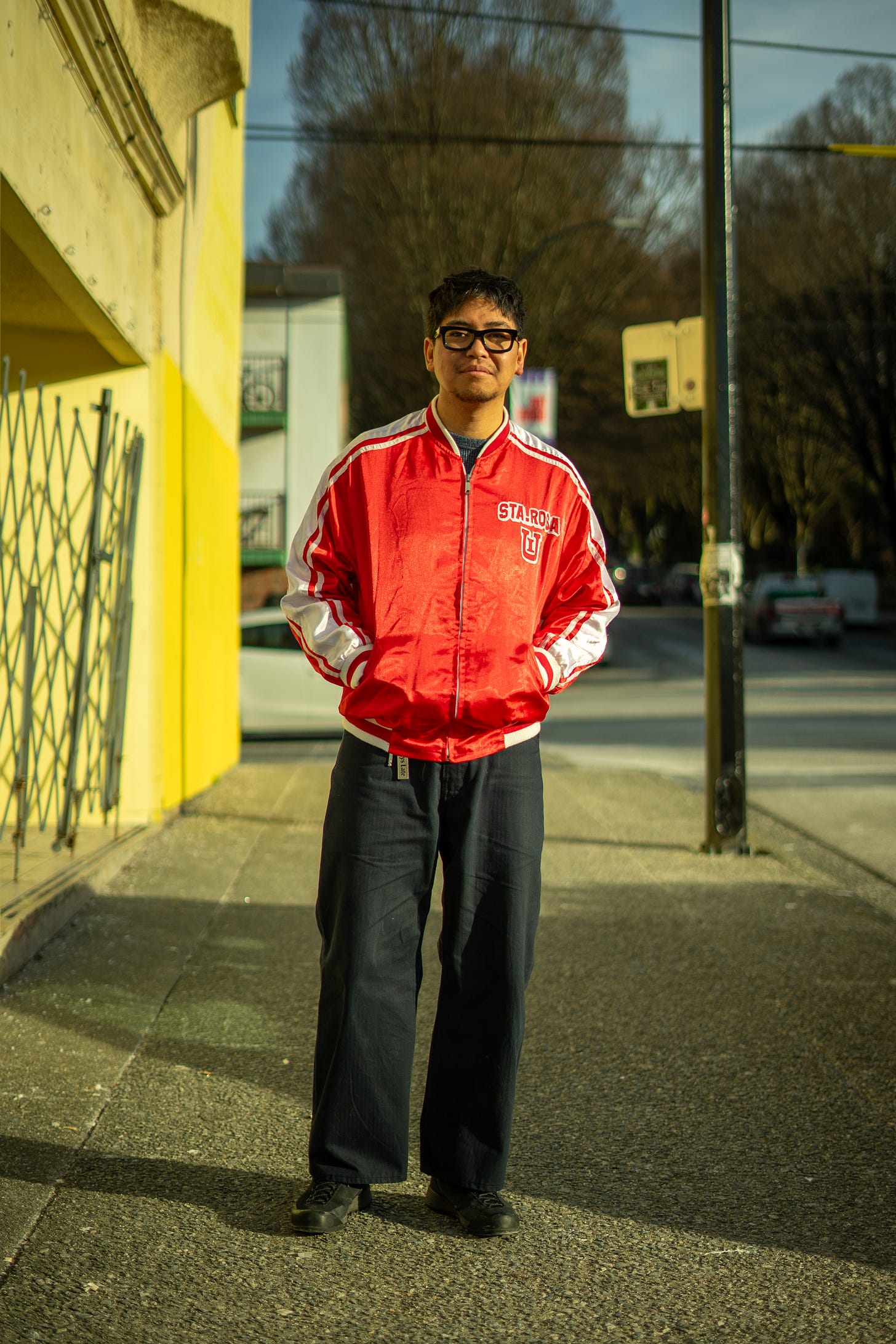
After we wrapped up the conversation about the jacket, he explained that he initially floated a few ideas of different articles of clothing to bring (namely, his Alterior jeans) before finally landing on the jacket. But, clothing aside though, he knew he was definitely going to bring the next item when I first pitched him the GENEs project a few months ago.
The Book
“I brought a book to keep with the book theme…” he said as he pointed to his library and pulled out the very used copy of Paulo Coelho’s Life: Selected Quotations.
”I used to carry this around like it was like a bible for me” he continued to explain as he started to admire how worn the spine was and promptly started to flip through the pages. His face brightened as if he just ran into an old friend.
But why this book? With many notable publications by this author, why a book of his quotes?
Back in high school, he had originally been told by his peers early on that he should read The Alchemist but, being a bit of a self-proclaimed contrarian when it comes to media suggestions, he decided to start somewhere else and read a few of his “less note-worthy” books, and really enjoyed them. Then, one day perusing a book store he came across this book and figured…
“I was wanting to read all of his books, but I was like, oh, there might be some cool quotes in here from a book that I haven't read of his and then that might inspire me to read it. But, for me, more importantly, this book became a kind of a place where I could give myself prompts to write.”
As we chatted he continued to flip through the pages, and reminisced about times when this book made an impact on his life. If you follow Donnel, you probably know his writing and photography are deeply reflective and beautiful. It was fascinating to see him hold a single book that fueled so much inspiration over the years.
”I think a lot of the themes and chapters of the book really resonated with me as a young adult. All these things were so prevalent when you're 20-21; dreaming, your life's path, love, your journey, destiny. Stuff that you think about at that age or you're trying to find out about yourself. A lot of these quotes gave me a lot of answers, I guess, that I was looking for, or at least quotes that made me think about whatever it was that I was going through at the time.
Every now and then, I'll come back to it and read some quotes that I maybe haven't read yet, or go through the chapters and be like, oh, I've really been having a thought about dreaming or the journey or something like that. I'll go and just read a couple of quotes to see if there's something there that speaks to me, that can provide me with some insights or point me in the right direction of where I'm thinking. It's been a really good guide for me.”
It’s been a while since he’s packed this in his bag, but as he flipped through looking at old quotes, I had a sense that it was going to work its way back into his regular rotation.
The conversation continued to ebb and flow, touching many different topics such as work, faith, travel, books, and on and on. In my perspective, we likely could have talked all afternoon with discussions rooted in the Life book and what its meant to his journey, I’ve ordered a couple of his Paulo Coelho recommendations since.
People came and went over the hour or so that I was sitting there with him. Quick and friendly “hellos and catch-ups” interrupted the interview, but he was always able to refocus on the topic at hand, a practice he is likely mastering having his workspace in such a social atmosphere.
In looking back at the photo’s, I caught some of the quotes on the page in the image above.
“In order to live fully, it is necessary to be in constant movement, only then can each day be different from the last. - The Zahir - “ (Paulo Coehlo).
I like to think he read this quote earlier, rather than later, in his ownership of this book, and it continues to fuel his quest for constant movement. Refining his processes, taking on new challenges, learning, and growing as an artist.
Conclusions
I am grateful of Donnel for taking the time, again, to chat with me, teaching me some new perspectives, and share the GENEs of his two favorite things.
Donnel’s two choices for people he’d like to see on GENEs:
Local: Dom (@jovial.ism, who I’ve covered recently on a couple INS(oev)IDEs)
Reach: Sarah Linh Tran of Lemaire
As always, I appreciate those of you who make it this far!
Please consider liking or subscribing below, or leaving a comment for Donnel or I on what you thought of the jacket and book, or, someone you’d like to see featured on GENEs.
If you know someone who’d be interested in reading these stories, share the story using the button below!
md

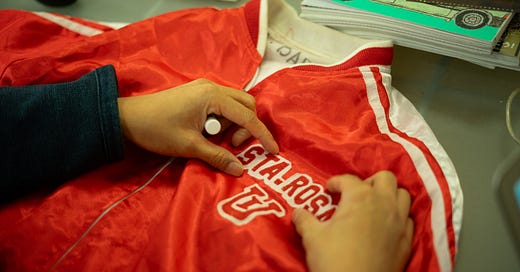



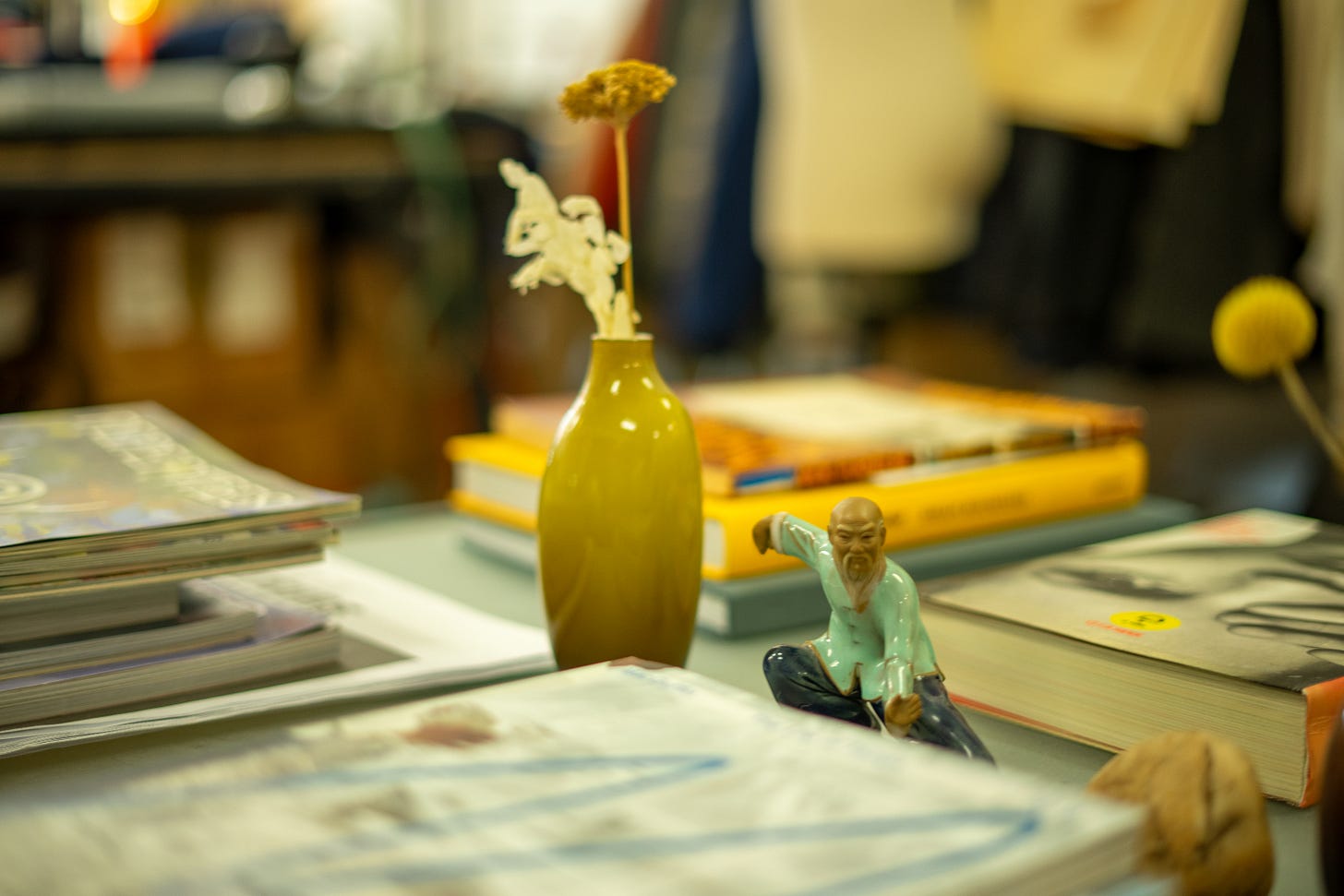
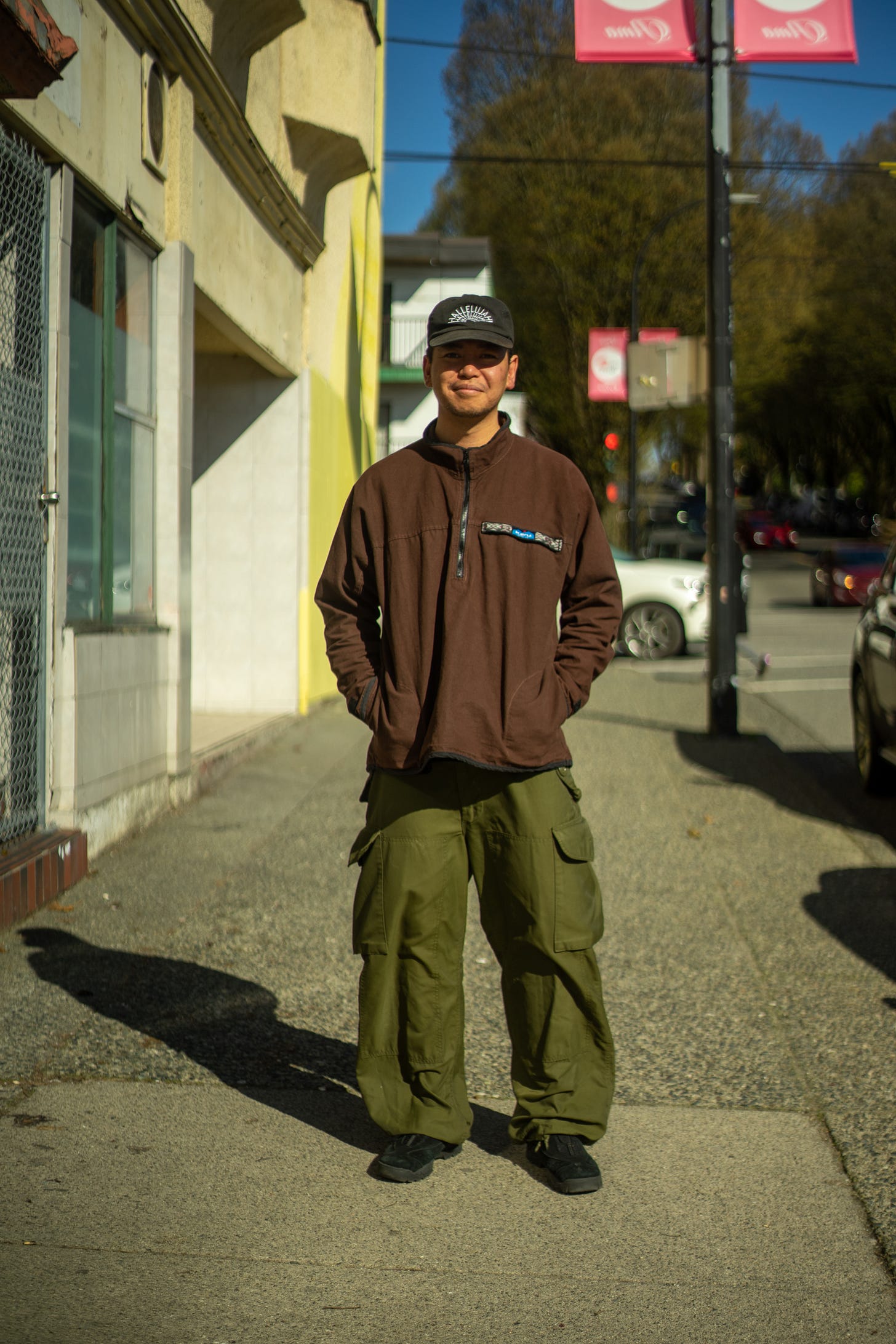
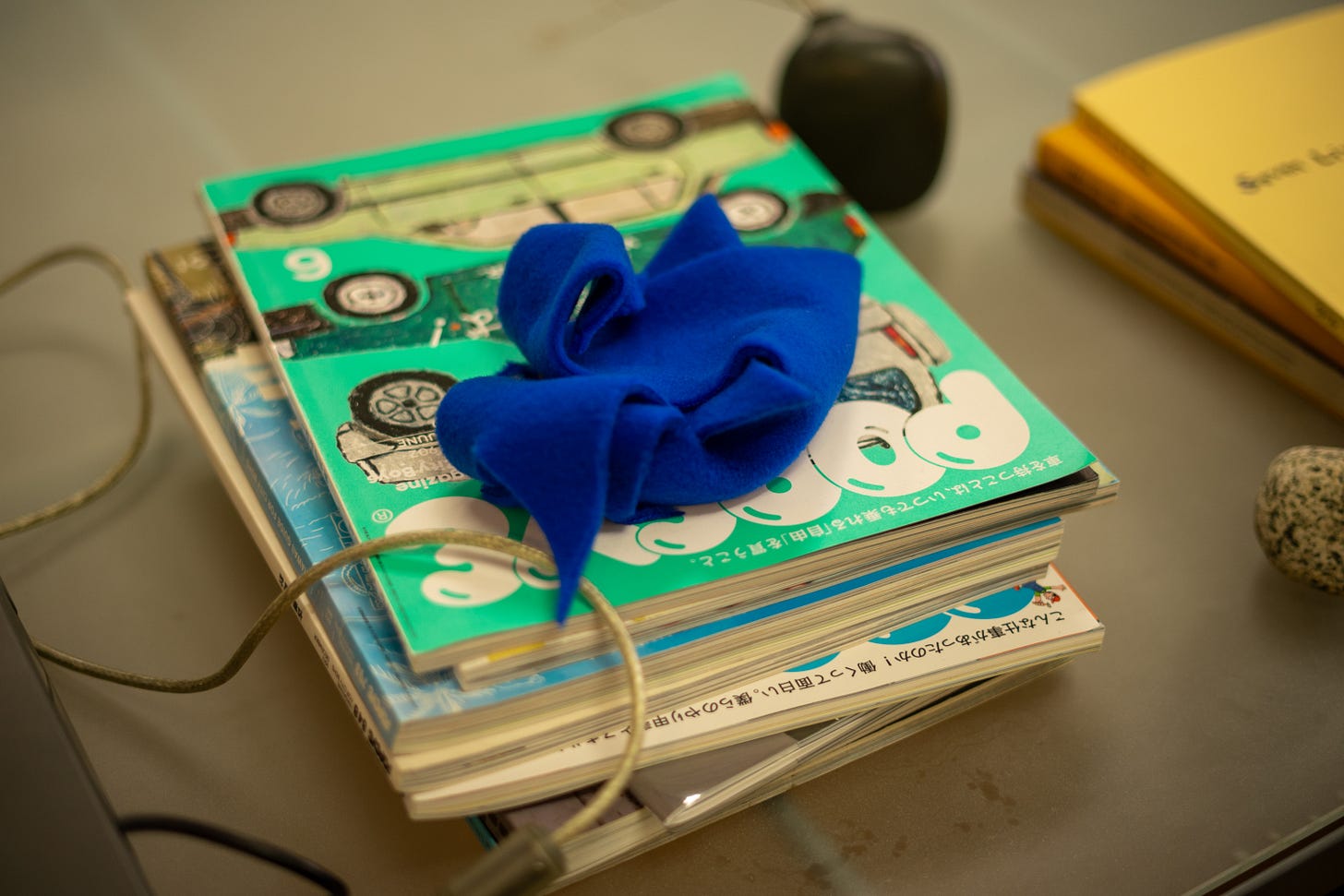

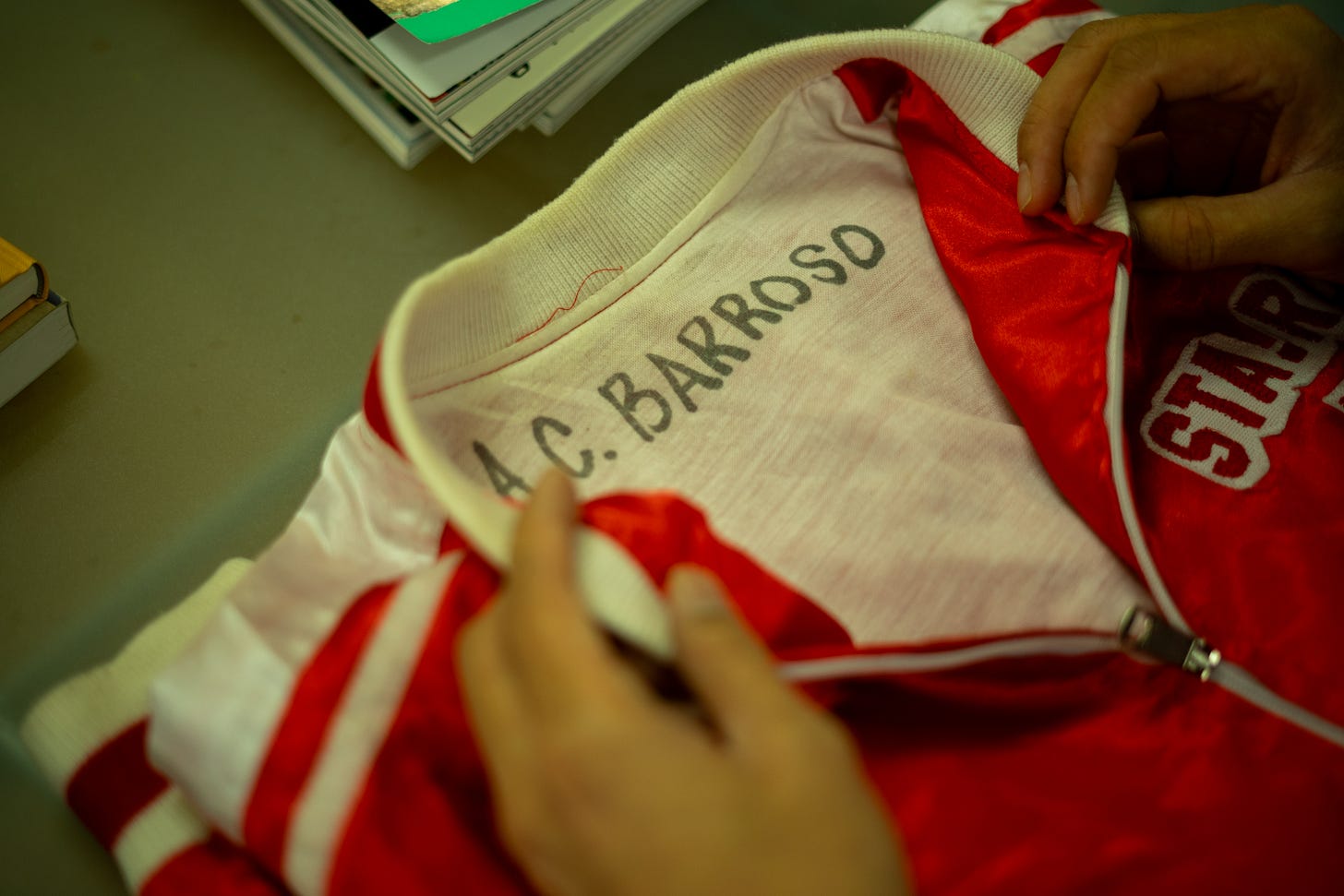
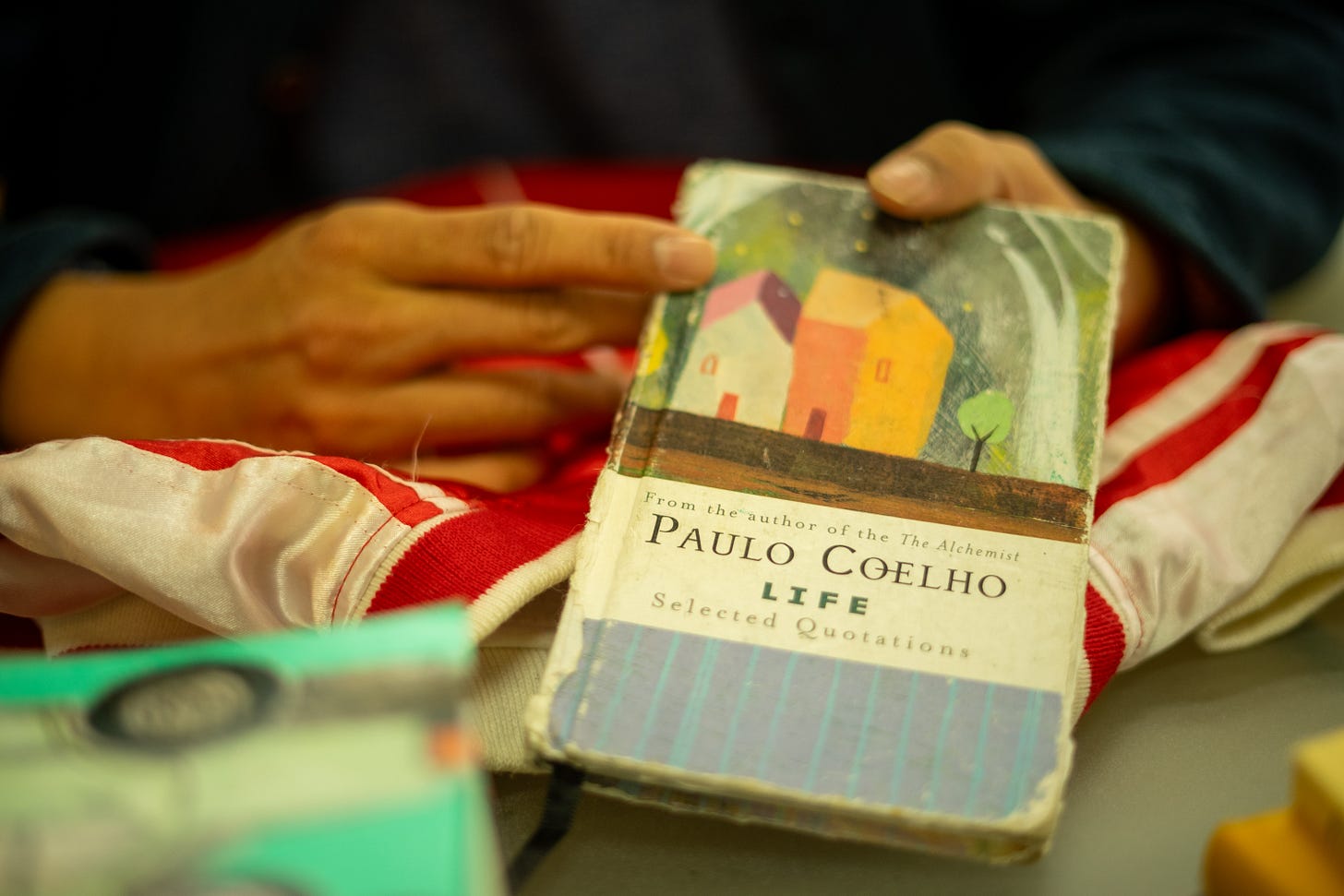
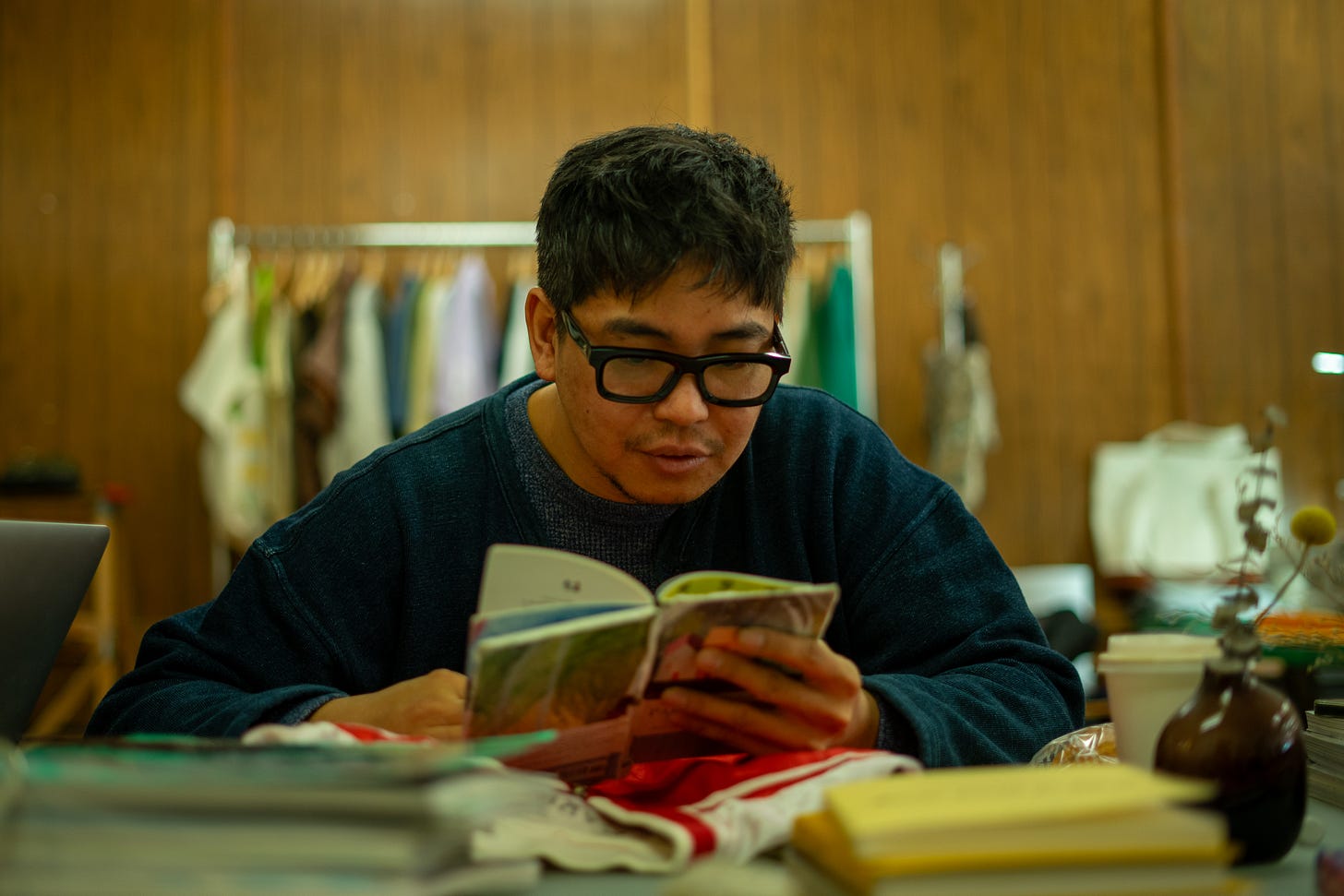
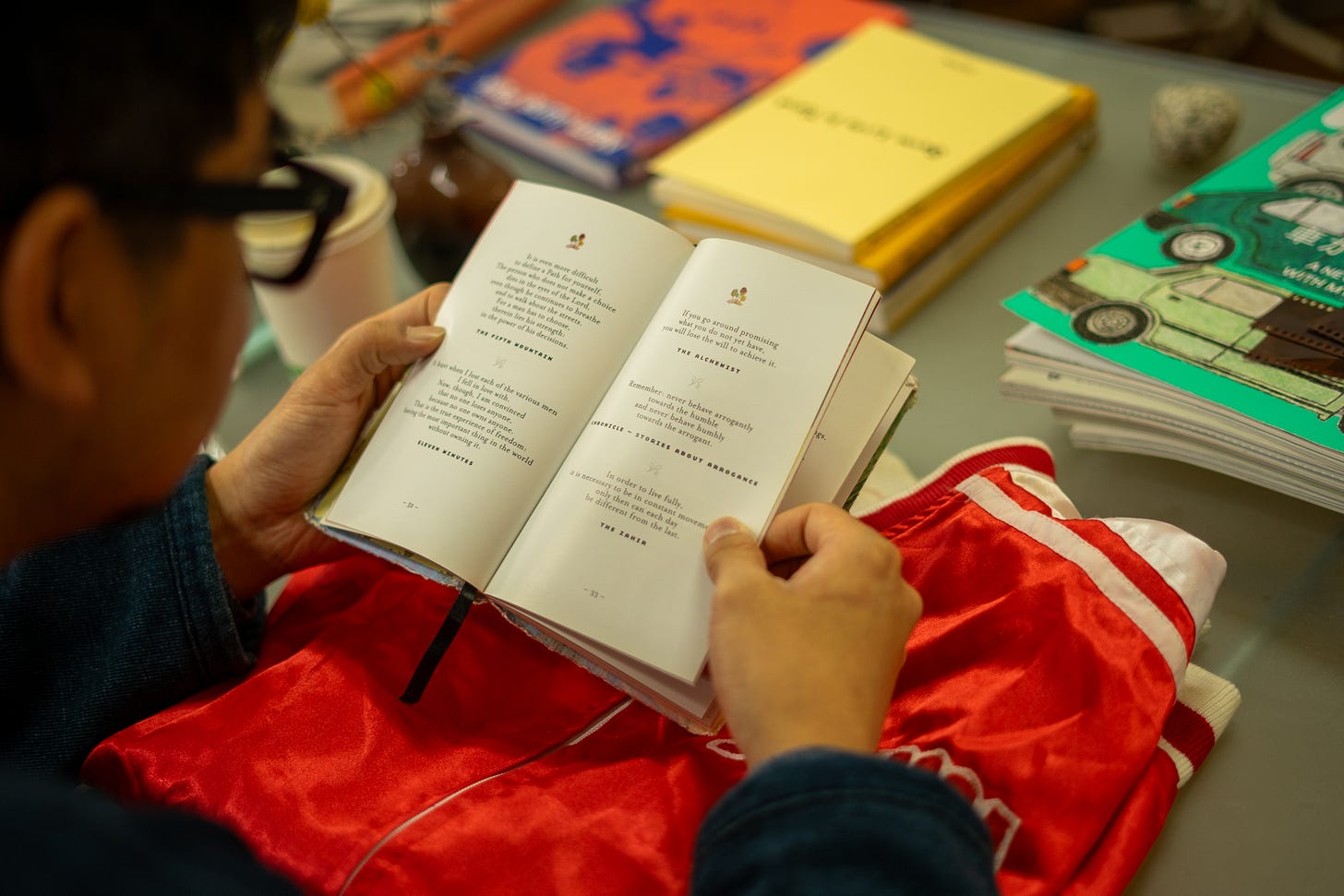
So interesting to think what might be commonplace somewhere else (the local custom patch) is unique elsewhere.